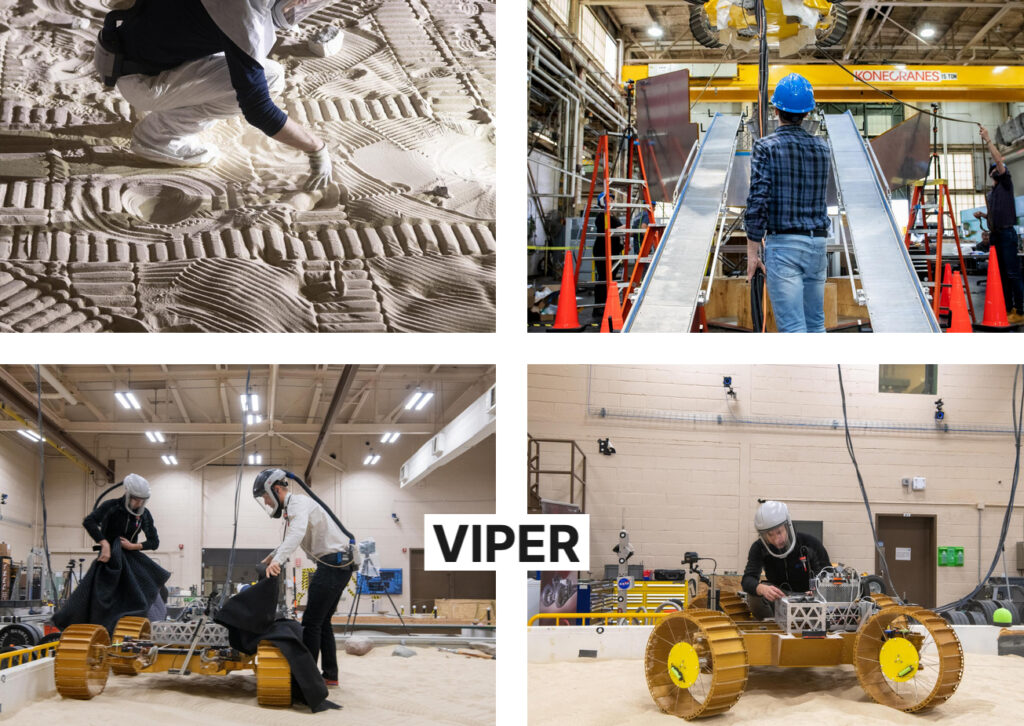

The National Space Society (NSS) has published a position paper concerning NASA’s announced plan to cancel the VIPER (Volatiles Investigating Polar Exploration Rover) mission to the Mon. VIPER has been in the works since 2018 and was intended to investigate the useful resources thought to exist at the lunar south pole.

In July, NASA announced its plans to cancel the mission due primarily to cost overruns and concerns with the planned lunar lander. The original budget of the mission was $433.5 million for the rover and another $235.6 million for launch services to be provided by commercial partners Astrobotic and SpaceX.
As of NASA’s announcement, the VIPER rover, being developed by the agency’s Ames Research Center in Mountain View, California, had exceeded the agency’s budget-growth limits, costing $450 million to date. This was the stated reason for the cancellation, which would save an estimated $84 million, or about one-eighth of the projected total mission cost.
NASA has offered to accept solicitations from private entities to complete and send the VIPER rover system to the Moon “at no cost to the government,” in its current form and without any disassembly.
The NSS supports the continuation of the VIPER mission, whether led solely by NASA or in collaboration with commercial partners. However, with VIPER’s future uncertain, the NSS additionally proposes that NASA consider adopting a different approach to lunar exploration, as outlined in the NASA-funded Evolvable Lunar Architecture (ELA) report from 2015 [Link], which advocates for a fleet of multiple small, low-cost commercial rovers sourced from multiple commercial providers. This approach would eliminate the risk of single-mission failure and promote redundancy. It would also allow for exploration over a wider range of the lunar surface and enhance the chances of success.
The cancellation of VIPER would be a tremendous blow to NASA and its commercial partners and would also cripple NASA’s larger goals. VIPER is a cornerstone of NASA’s Artemis program and directly supports the long-term goals of sustainable lunar exploration and resource utilization. Without VIPER, the Artemis program risks falling short of its transformative potential, reducing it to little more than a repeat of the Apollo missions. The NSS paper can be viewed here.
Portal to the NSS position paper,,,
The NASA press release regarding VIPER cancellation
NASA Ends VIPER Project, Continues Moon Exploration
Following a comprehensive internal review, NASA has its intent to discontinue development of its VIPER (Volatiles Investigating Polar Exploration Rover) project.

NASA stated cost increases, delays to the launch date, and the risks of future cost growth as the reasons to stand down on the mission. The rover was originally planned to launch in late 2023, but in 2022, NASA requested a launch delay to late 2024 to provide more time for preflight testing of the Astrobotic lander. Since that time, additional schedule and supply chain delays pushed VIPER’s readiness date to September 2025, and independently its CLPS (Commercial Lunar Payload Services) launch aboard Astrobotic’s Griffin lander also has been delayed to a similar time. Continuation of VIPER would result in an increased cost that threatens cancellation or disruption to other CLPS missions. NASA has notified Congress of the agency’s intent.
Moving forward, NASA is planning to disassemble and reuse VIPER’s instruments and components for future Moon missions. Prior to disassembly, NASA will consider expressions of interest from U.S. industry and international partners by Thursday, Aug. 1, for use of the existing VIPER rover system at no cost to the government. Interested parties should contact [email protected] after 10 a.m. EDT on Thursday, July 18. The project will conduct an orderly close out through spring 2025.
Astrobotic will continue its Griffin Mission One within its contract with NASA, working toward a launch scheduled for no earlier than fall 2025. The landing without VIPER will provide a flight demonstration of the Griffin lander and its engines.
NASA will pursue alternative methods to accomplish many of VIPER’s goals and verify the presence of ice at the lunar South Pole. A future CLPS delivery –the Polar Resources Ice Mining Experiment-1 (PRIME-1) — scheduled to land at the South Pole during the fourth quarter of 2024, will search for water ice and carry out a resource utilization demonstration using a drill and mass spectrometer to measure the volatile content of subsurface materials.
Additionally, future instruments as part of NASA’s crewed missions – for example, the Lunar Terrain Vehicle — will allow for mobile observations of volatiles across the south polar region, as well as provide access for astronauts to the Moon’s permanently shadowed regions for dedicated sample return campaigns. The agency will also use copies of three of VIPER’s four instruments for future Moon landings on separate flights.
The VIPER rover was designed to search Earth’s Moon for ice and other potential resources – in support of NASA’s commitment to study the Moon and help unravel some of the greatest mysteries of our solar system. Through NASA’s lunar initiatives, including Artemis human missions and CLPS, NASA is exploring more of the Moon than ever before using highly trained astronauts, advanced robotics, U.S. commercial providers, and international partners.
“We are committed to studying and exploring the Moon for the benefit of humanity through the CLPS program,” said Nicola Fox, associate administrator, Science Mission Directorate, NASA Headquarters in Washington. “The agency has an array of missions planned to look for ice and other resources on the Moon over the next five years. Our path forward will make maximum use of the technology and work that went into VIPER, while preserving critical funds to support our robust lunar portfolio.”
